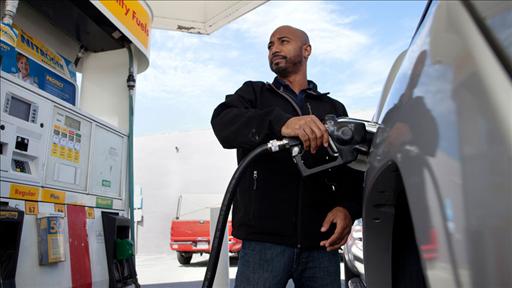By Barbara J. Powell
Gasoline and heating oil rose as crude and equities gained and the dollar weakened against the euro, increasing the investment appeal of commodities.
Futures advanced a second day as Brent crude climbed, boosting costs for European and U.S. East Coast refiners that process imported oil. The euro appreciated against the U.S. currency on optimism that a deal will be reached to help Greece avoid defaulting on its debt and on speculation the European Central Bank will increase lending rates.
“Everything seems to be marching hand in hand with the equities and the dollar,” said Gene McGillian, an analyst and broker at Tradition Energy in Stamford, Connecticut. “The chatter of possible passage of austerity measures in Greece is easing fears about a credit crisis.”
Gasoline for July delivery gained 5.98 cents, or 2.1 percent, to $2.8673 a gallon at 12:45 p.m. on the New York Mercantile Exchange. Prices have dropped 9 percent this month and by 7.7 percent in the quarter that ends June 30.
Today’s gain was part of a broad rally in commodities. The Thomson Reuters/Jefferies CRB Index of 19 commodities rose 1.2 percent as of 12:47 p.m. in New York, the biggest gain since May 25, as 17 of 19 contracts advanced.
“We’ve come off quite a bit the last few weeks and all the key ingredients are here for a decent rebound, since the fear factor for a Greek default has abated,” said James Cordier, portfolio manager at OptionSellers.com in Tampa, Florida.
Dollar Drops
The U.S. currency fell a second day against the euro, dropping 0.5 percent as of 12:47 p.m. in New York. The Standard & Poor’s 500 index gained 1 percent.
ECB President Jean-Claude Trichet said policy makers are in “strong vigilance mode,” signaling they intend to raise interest rates next week. Trichet declined to comment specifically on the Greek crisis or a French proposal under which creditors would agree to roll over 70 percent of their Greek bonds.
Greek lawmakers are scheduled to vote tomorrow on Prime Minister George Papandreaou’s 78 billion euro ($111 billion) plan to cut spending and sell assets, a condition of further aid from the ECB.
“The market was in free fall on concerns about Greece,” said Phil Flynn, vice president of research at PFGBest in Chicago. “Trichet seems to be approving restructuring of the Greek debt.”
Gasoline and heating oil premiums over crude oil on Nymex increased as Brent on the ICE Futures Europe exchange gained more than West Texas Intermediate oil.
Crack Spreads
The premium for gasoline, or the crack spread, based on August futures, increased $1.18 to $25.84 a barrel on the exchange, while the August heating oil crack spread gained $1.29 to $27.50.
The WTI-Brent spread, based on August futures, widened to $16.55 a barrel from $15.38 yesterday.
U.S. gasoline stockpiles probably rose 775,000 barrels in the week ended June 24, according to the median estimate of 12 analysts in a survey by Bloomberg News. Supplies of industrial, trucking and home-heating fuels rose 1.05 million barrels.
The Energy Department is scheduled to report last week’s inventories at 10:30 a.m. tomorrow inWashington.
In the week ended June 17, gasoline demand, measured by deliveries to wholesalers, fell 0.5 percent to 9.32 million barrels a day. On a four-week average, consumption was 0.9 percent above a year earlier.
“Demand for this July 4 holiday driving and for Labor Day will fall short of last year,” Cordier said. “The weaker economy is going to keep people a little closer to home.”
Demand Peak
The U.S. Labor Day holiday falls on Sept. 5 this year and traditionally is considered the end of the summer driving season. Gasoline demand peaked on Aug. 17 in 2007, on Aug. 1 in 2008, on May 22 in 2009 and on July 23 last year, according to department data.
“I would expect the week ended July 1 to show some increase in demand week to week as retailers stock up for the holiday and another smaller increase the week ended July 8 as they stock up after the holiday,” said Sander Cohan, an analyst with Energy Security Analysis Inc. in Wakefield, Massachusetts. “But we’ll see lower demand than last year because retail prices are still too high to reverse this flat demand trend.”
Prices at the pump are 29 percent higher than a year earlier, according to AAA data on its website. Regular gasoline at the pump declined 1.4 cents to $3.551 yesterday, the 25th consecutive drop and the lowest level since March 23.
Heating oil for July delivery rose 5.79 cents, or 2.1 percent, to $2.8228 a gallon on the exchange. Heating oil has dropped 7.6 percent in June and 8.6 percent this quarter.



















